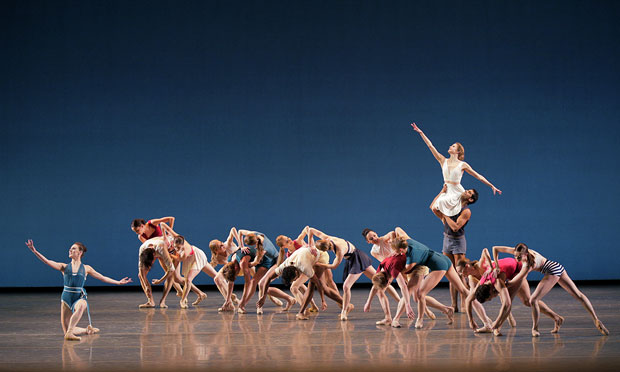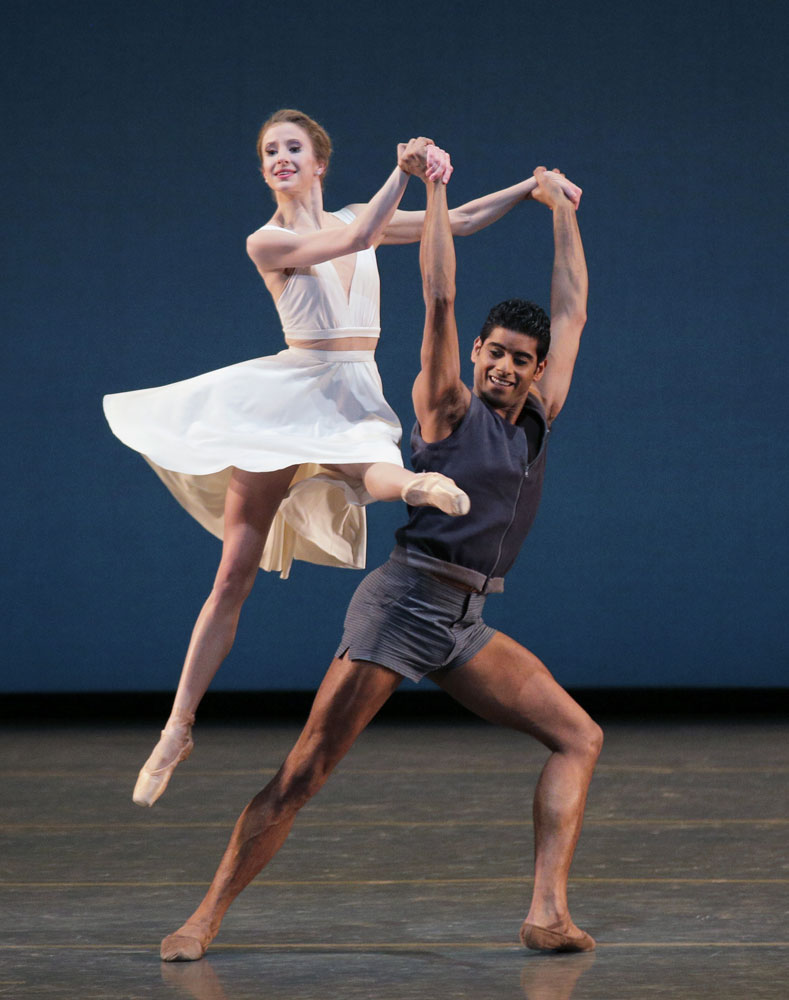By Rachel Straus
The blogosphere is alive with news about the current forays of New York City ballet principal dancers Robert Fairchild, Megan Fairchild, and Tyler Peck into Broadway.
Robert Fairchild will appear in An American in Paris in the role originated by Gene Kelly. The production will premiere in Paris and will come to Broadway in the spring. Former New York City Ballet resident choreographer Christopher Wheeldon will provide the choreography.
Megan Fairchild, Robert’s older sister, recently made her Broadway debut (September 21) in the Broadway revival of On The Town. Originally conceived by Jerome Robbins and based on his 1944 hit ballet Fancy Free, On The Town requires that Fairchild dance, sing and act in her role as Ivy Smith, the small town girl who comes to the big city.
Then there is Tyler Peck, who Robert Fairchild recently married. She will premiere in the new Susan Stroman musical Little Dancer at the Kennedy Center on October 25. The musical is inspired by the relationship between painter Edgar Degas and Marie van Goethem, the poor ballet student who modeled for his sculpture “Little Dancer Aged Fourteen” (1881).
The movement of dancers between The Great White Way and the mirrored precincts of the ballet studio is nothing new. What is of note is the development of the Fairchild-Peck dance family dynasty, which also includes Megan Fairchild’s husband Andrew Veyette, another New York City Ballet principal dancer. Veyette excels in Broadway-style City Ballet works such as NY Export: Opus Jazz, where sharpness and grit rather than classical aplomb are emphasized.
Clearly this dancing foursome, who are mature dancers, are looking beyond their careers at City Ballet and ballet, in general. It wouldn’t be surprising if they started a televised dance program, one that presented their shared interests in ballet, Jazz dance, big business (in the performing arts), and self-marketing.
What is not certain for these intrepid ballet dancers is whether their current or upcoming work on Broadway will launch them into a new performing sphere. Much of that success depends on the ability of the choreographers who are, or will be, directing them.
The other ingredient for success is the development of a different kind of stage personality. Highly successful musical theater performers, whether it be Nathan Lane or Sutton Foster, take the material and make it quirky (or comically) their own.
So, in honor of iconic performers and legendary director-choreographers, here is a little slide-show movie about Jack Cole, George Balanchine, and Jerome Robbins, who worked extensively with ballet-trained dancers, from Gwen Verdon to Vera Zorina to Chita Rivera. Together they made numerous enduring Broadway and Hollywood musical theater dance numbers. All three men developed their choreographic voices by breaking the so-called boundaries between the dance forms. All three woman showed that great dancing technique looks like play instead of performance.
To see the slide show movie, press on this link:
Ballet Goes Broadway, Back Then

